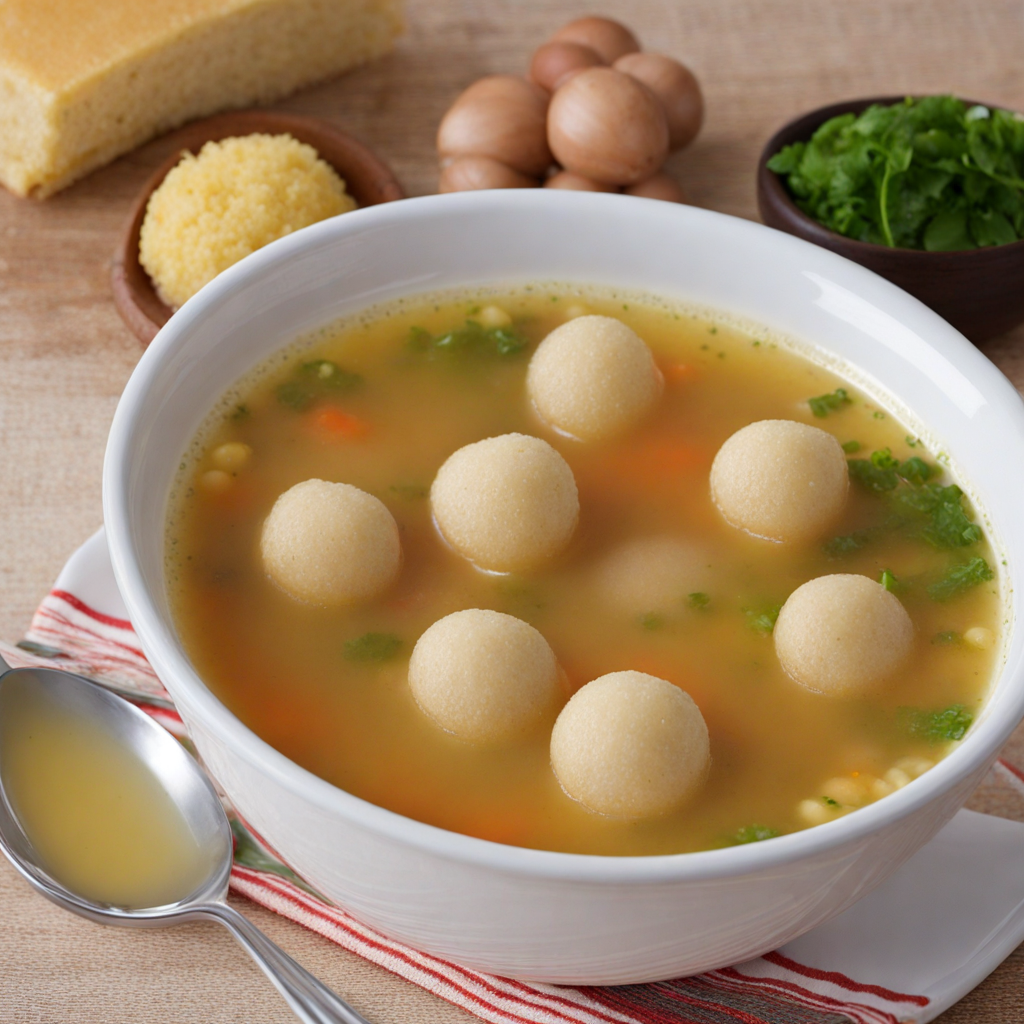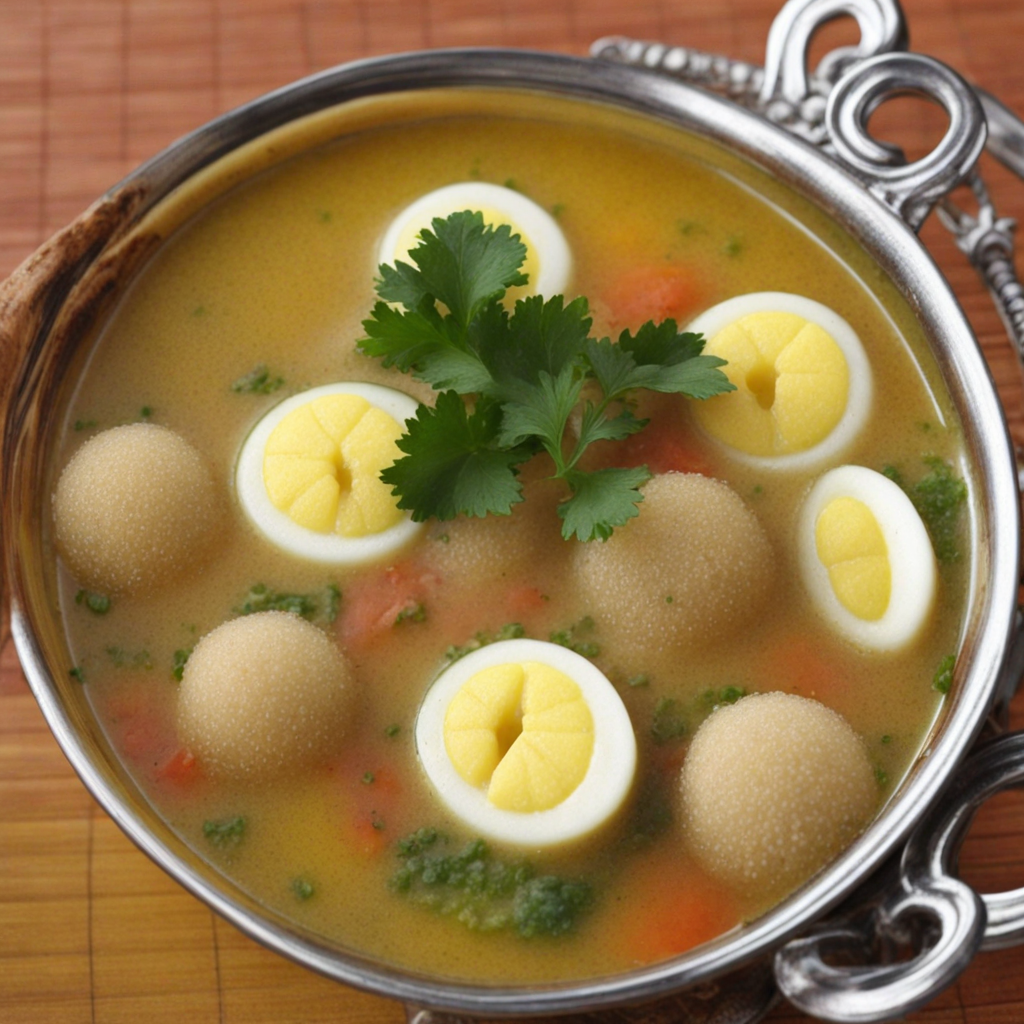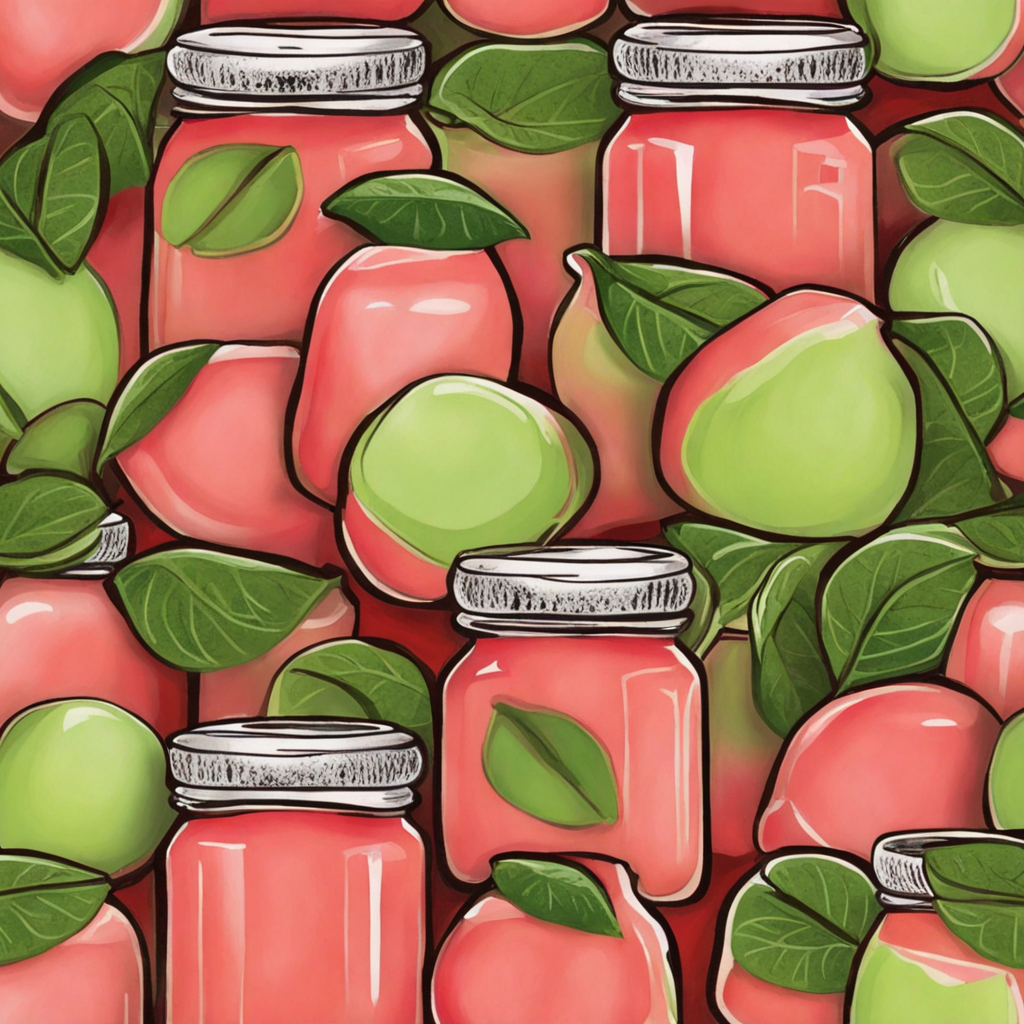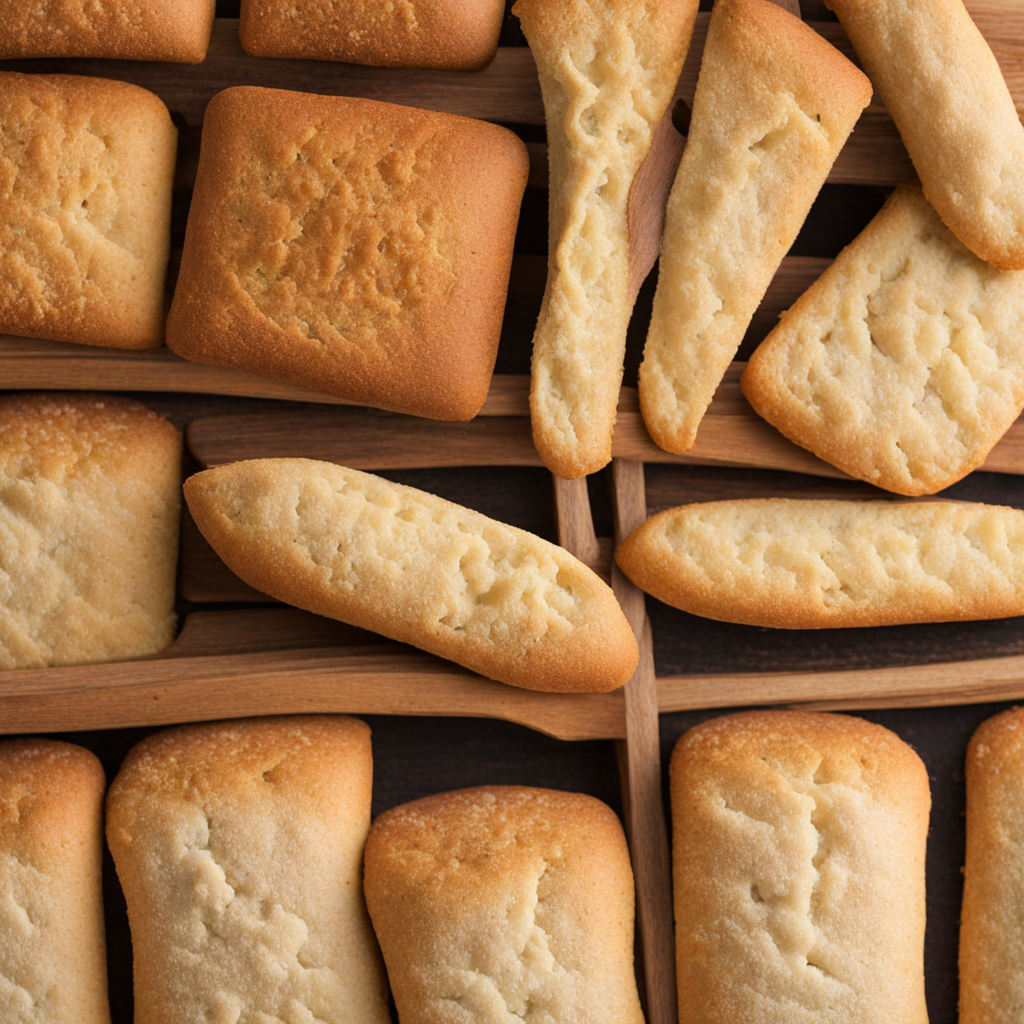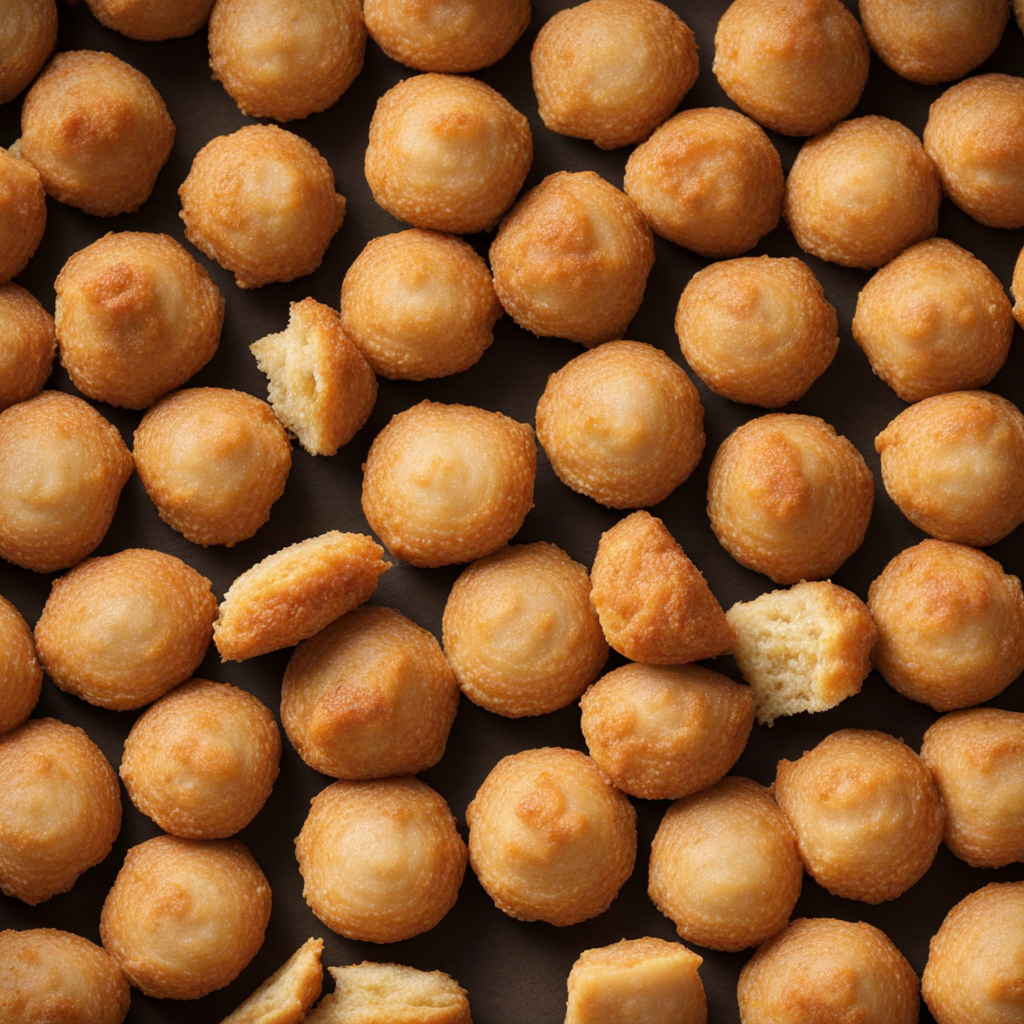Vori Vori
Vori Vori is a delightful Paraguayan dish that showcases the unique flavors of the region. At its core, Vori Vori consists of small dumplings made from corn flour, which are infused with cheese, predominantly Paraguayan cheese known as "queso paraguayo." This gives the dumplings a delightful chewy texture and a savory flavor that is both comforting and satisfying. The dish is often served in a rich chicken or beef broth, which adds depth and warmth, making it perfect for both cold weather and any time you crave a hearty meal. What sets Vori Vori apart is its versatility and the way it reflects the culinary traditions of Paraguay. The broth can be seasoned with herbs and spices, such as coriander and garlic, enhancing the overall taste experience. Additionally, some variations include vegetables or even hints of chili, allowing for a complex flavor profile that balances the richness of the cheese with the freshness of the herbs. Each bite reveals a delightful combination of textures, from the soft dumpling to the warm, flavorful broth. Enjoying Vori Vori is not just about the food; it's about embracing a cultural experience. Typically served as a comfort food during gatherings or family meals, it brings people together to share in the joy of cooking and eating. Whether you are enjoying it in a cozy restaurant or trying your hand at making it at home, Vori Vori invites you to indulge in the heartwarming flavors of Paraguay, making it a must-try for anyone looking to explore new culinary horizons.
How It Became This Dish
Vori Vori: A Culinary Journey through Paraguay’s Heart In the lush landscapes of Paraguay, where the Paraguay and Paraná rivers weave their way through verdant jungles and sprawling savannahs, a culinary gem known as Vori Vori has emerged as a beloved dish that reflects the rich tapestry of the nation’s culture and history. This traditional Paraguayan dish, primarily made of cornmeal dumplings and served in a hearty chicken or beef broth, has deep roots in indigenous traditions, colonial influences, and modern adaptations. Origins of Vori Vori The origins of Vori Vori can be traced back to the indigenous Guaraní people, who have inhabited the region for centuries. The Guaraní were skilled agriculturalists, cultivating crops such as corn, cassava, and beans. Corn, known as "maíz," was a staple in their diet and plays a pivotal role in many traditional Paraguayan dishes. The name "Vori Vori" itself is derived from the Guaraní language, where "vori" means "to boil" or "to cook in water." This etymology gives insight into the cooking method and the dish's simplicity, emphasizing the connection to the land and the ingredients used. As Paraguay went through the colonial period in the 16th century, Spanish settlers brought their own culinary practices, which blended with indigenous ingredients and techniques. This fusion gave rise to a vibrant culinary landscape where dishes like Vori Vori could evolve. The introduction of domesticated animals, particularly chickens and cows, allowed for the incorporation of meat into the broth, enriching the dish further and elevating its status as a staple in Paraguayan households. Cultural Significance Vori Vori is more than just food; it is a symbol of Paraguayan identity and culture. It embodies the spirit of community and family, often served during gatherings, celebrations, and important cultural events. The dish is typically prepared in large quantities, making it perfect for sharing among family and friends. This communal aspect of eating reflects the values of togetherness and hospitality that are central to Paraguayan society. In rural areas, the preparation of Vori Vori can be a communal event, with families coming together to cook and celebrate their heritage. The process of making the dumplings, which involves mixing cornmeal with water and sometimes cheese, is often passed down through generations, with each family adding their unique touch. Some might incorporate herbs, spices, or even vegetables to create variations that reflect local flavors and preferences. During special occasions, such as festivals or religious celebrations, Vori Vori is a dish that often graces the table. It is not uncommon to find it served alongside other traditional foods, creating a rich spread that showcases the diversity of Paraguayan cuisine. In many ways, Vori Vori acts as a culinary bridge that connects the past with the present, linking generations through shared meals. Development Over Time Over the years, Vori Vori has experienced various adaptations and transformations, shaped by changing tastes, regional influences, and globalization. Traditionally, the dish would feature a simple broth made from chicken or beef, seasoned with a handful of local spices and herbs. However, as Paraguay has evolved, so too has the dish. One significant development in the 20th century was the increased accessibility of ingredients. As transportation improved, various vegetables and spices that were once difficult to obtain became more readily available. This accessibility allowed for the introduction of new flavors and ingredients into the Vori Vori preparation. For example, some modern recipes now include the addition of vegetables like carrots, potatoes, or even peppers, enhancing both the nutritional value and flavor profile of the dish. Additionally, the rise of urbanization in Paraguay has influenced the way Vori Vori is prepared and consumed. In urban settings, where time constraints are often a factor, many families have turned to quicker methods of preparation. While traditional recipes might call for hours of simmering broth and handmade dumplings, contemporary cooks may opt for pre-made broths or even instant cornmeal mixes. Despite these changes, the essence of Vori Vori remains intact, as families continue to gather around the table, sharing stories and memories over a steaming bowl of this comforting dish. Vori Vori in Contemporary Cuisine In recent years, there has been a revitalization of interest in traditional Paraguayan cuisine, with chefs and food enthusiasts seeking to honor and promote the country’s culinary heritage. This renewed focus has brought Vori Vori back into the spotlight, with restaurants and food festivals featuring the dish prominently on their menus. Chefs are now experimenting with Vori Vori, incorporating gourmet elements and modern cooking techniques while still respecting the traditional roots of the dish. For instance, some chefs have begun to serve Vori Vori in more upscale settings, pairing it with fine wines or presenting it as part of a multi-course meal. Others have taken the dish beyond its traditional boundaries, creating fusion versions that incorporate global flavors and techniques, while still maintaining the heart of the dish. Moreover, social media platforms have played a crucial role in popularizing Vori Vori, allowing home cooks and chefs to share their recipes, tips, and variations with a global audience. This exposure has not only increased the dish's popularity within Paraguay but has also piqued the interest of food lovers around the world, who are eager to explore the rich culinary traditions of South America. Conclusion Vori Vori stands as a testament to Paraguay's rich cultural heritage, weaving together the threads of indigenous practices, colonial influences, and modern adaptations. It is a dish that encapsulates the essence of community, identity, and the celebration of life through food. As Paraguay continues to evolve, so too will Vori Vori, adapting to new influences while remaining a cherished symbol of the nation’s culinary history. Whether enjoyed in a bustling urban restaurant or a rustic family kitchen, Vori Vori retains its status as a beloved dish, uniting generations and nourishing both body and soul.
You may like
Discover local flavors from Paraguay


